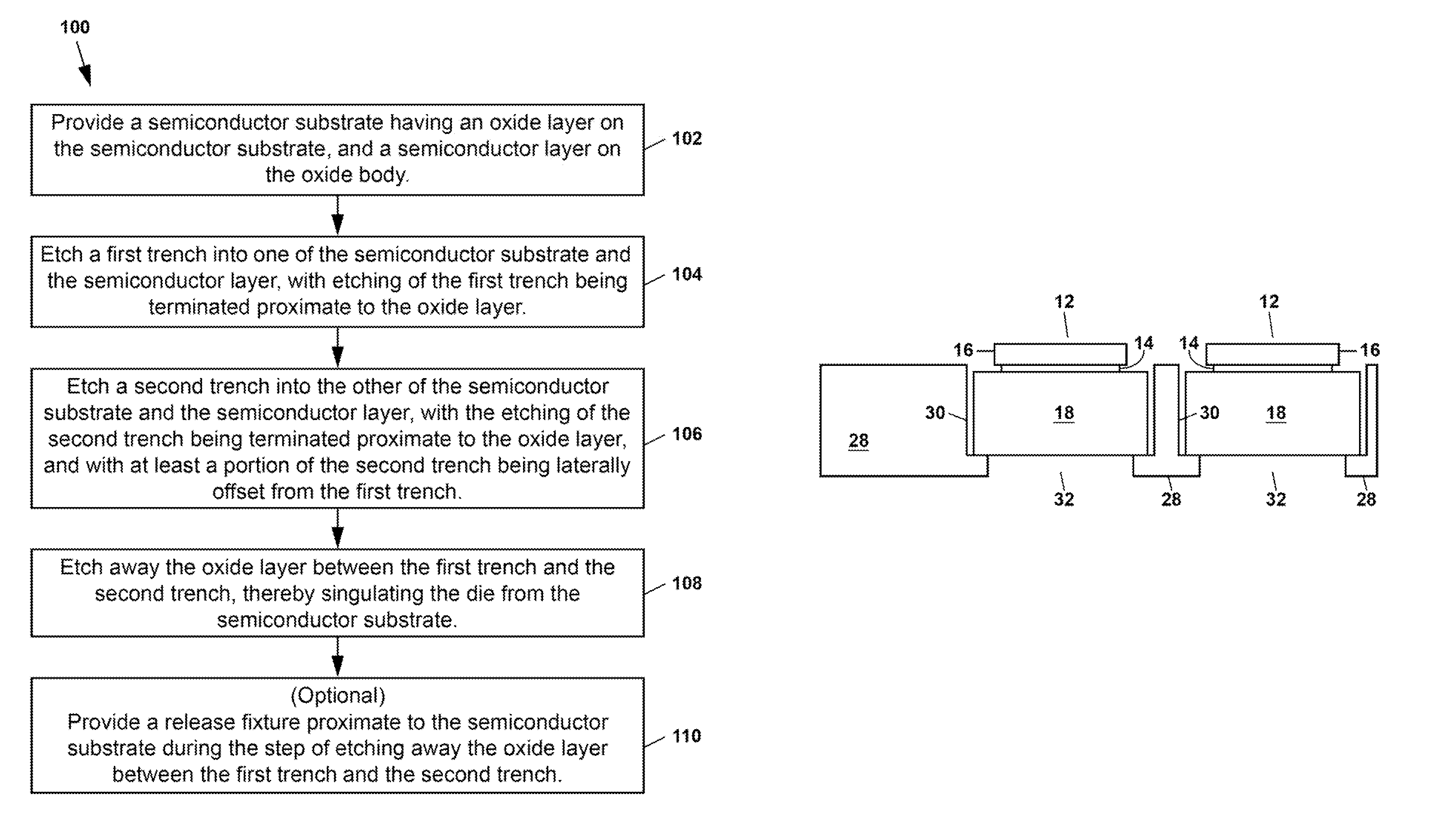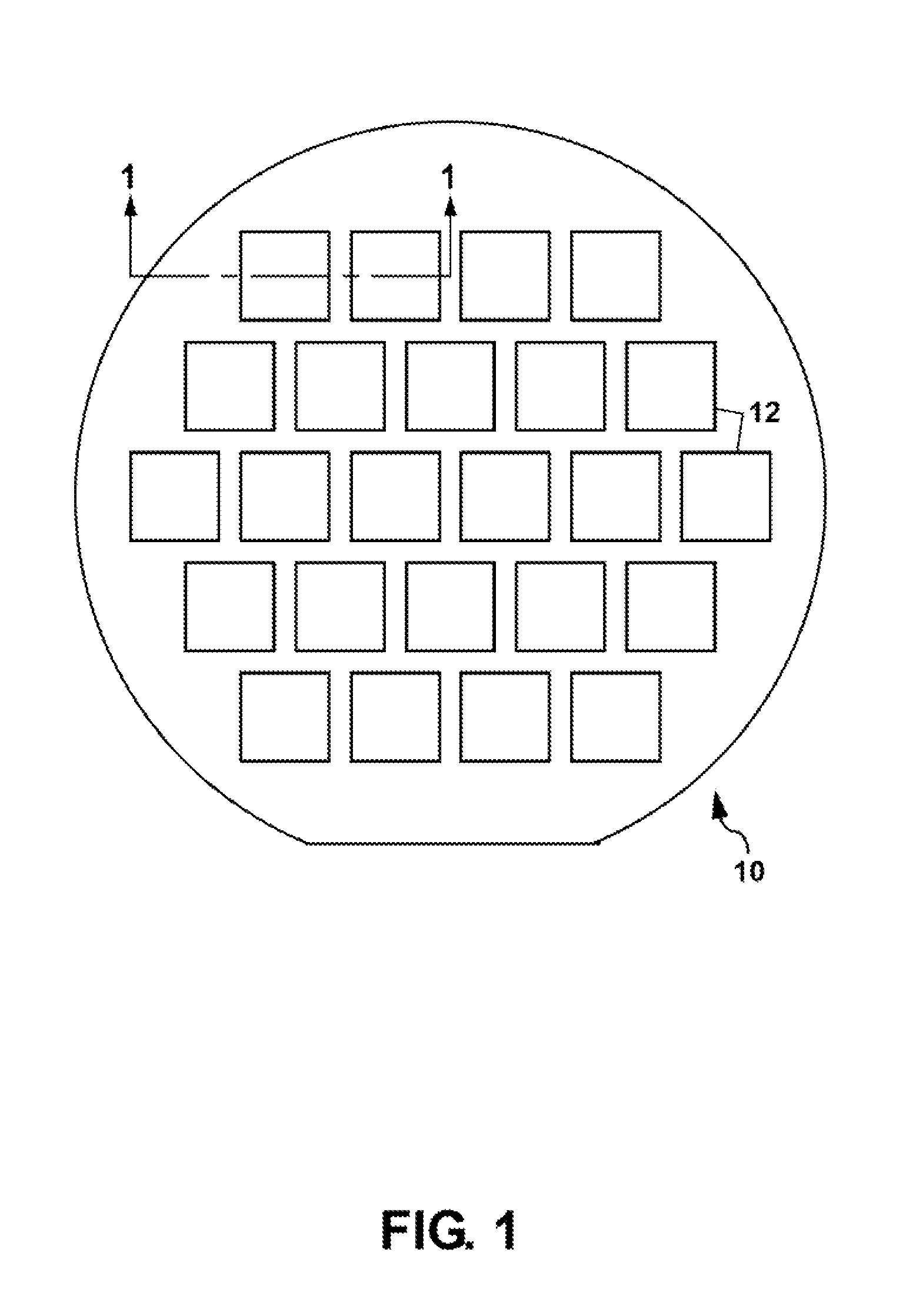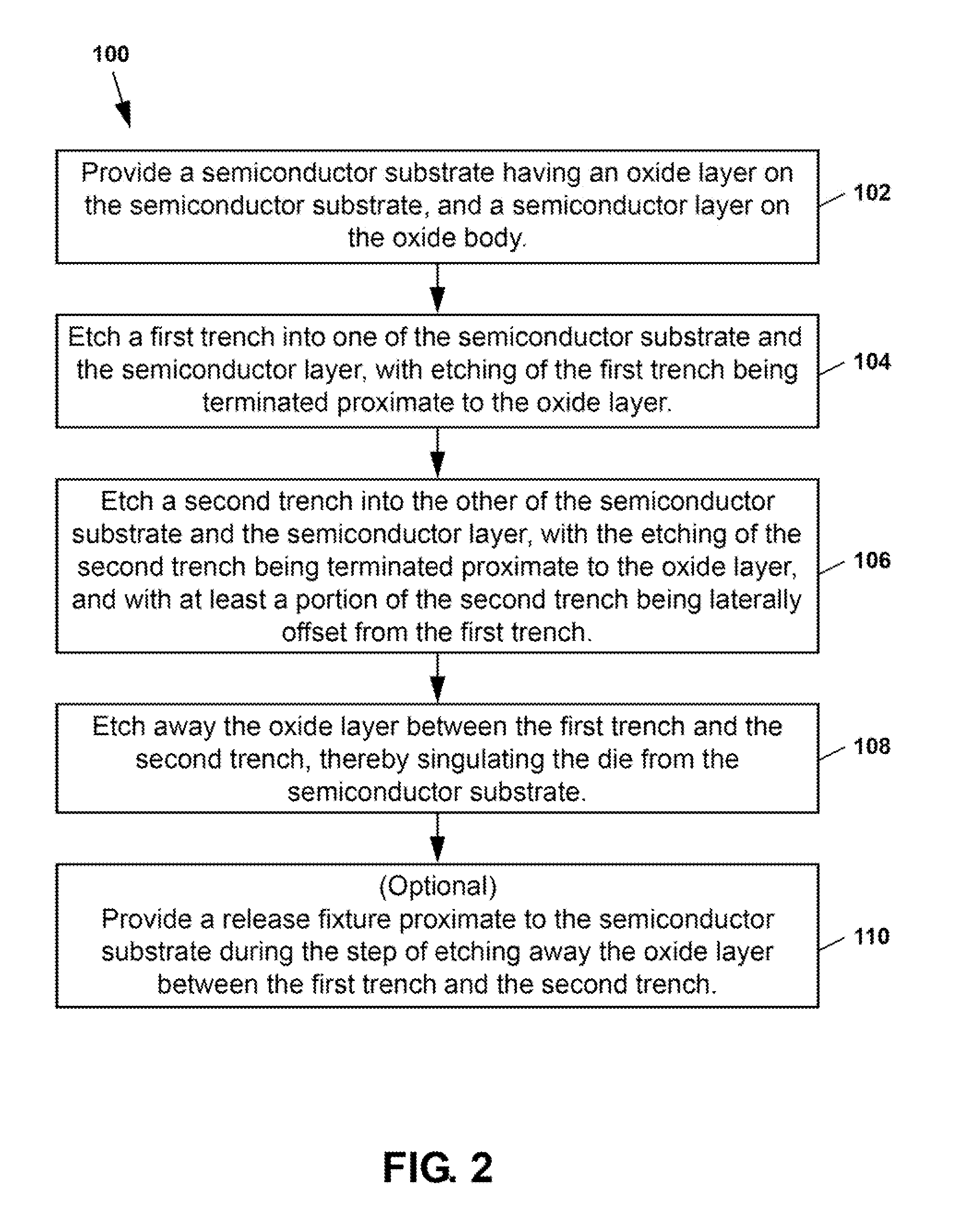Die singulation method
- Summary
- Abstract
- Description
- Claims
- Application Information
AI Technical Summary
Benefits of technology
Problems solved by technology
Method used
Image
Examples
Embodiment Construction
[0035]FIG. 1 shows a schematic plan view of a semiconductor substrate 10 having a plurality of die 12 formed thereon prior to singulation of the die 12 according to the method 100 of the present invention. Various steps in the method 100 for singulating the die 12 from the semiconductor substrate 10 are illustrated in FIG. 2 and will be described hereinafter with reference to FIGS. 3A-3E which show a series of schematic partial cross-section views along the section line 1-1 in FIG. 1.
[0036]The term “die” as used herein, which can be either singular or plural, refers to a portion of the substrate 10 wherein at least one semiconductor device such as an integrated circuit (IC), a microelectromechanical system (MEMS) device, a microfluidic device, a sensor, or a combination thereof is formed by a series of well-known semiconductor processing steps. The terms “singulation” and “singulating” as used herein refer to separating one or more of the die 12 from the semiconductor substrate 10 w...
PUM
 Login to View More
Login to View More Abstract
Description
Claims
Application Information
 Login to View More
Login to View More - R&D
- Intellectual Property
- Life Sciences
- Materials
- Tech Scout
- Unparalleled Data Quality
- Higher Quality Content
- 60% Fewer Hallucinations
Browse by: Latest US Patents, China's latest patents, Technical Efficacy Thesaurus, Application Domain, Technology Topic, Popular Technical Reports.
© 2025 PatSnap. All rights reserved.Legal|Privacy policy|Modern Slavery Act Transparency Statement|Sitemap|About US| Contact US: help@patsnap.com



